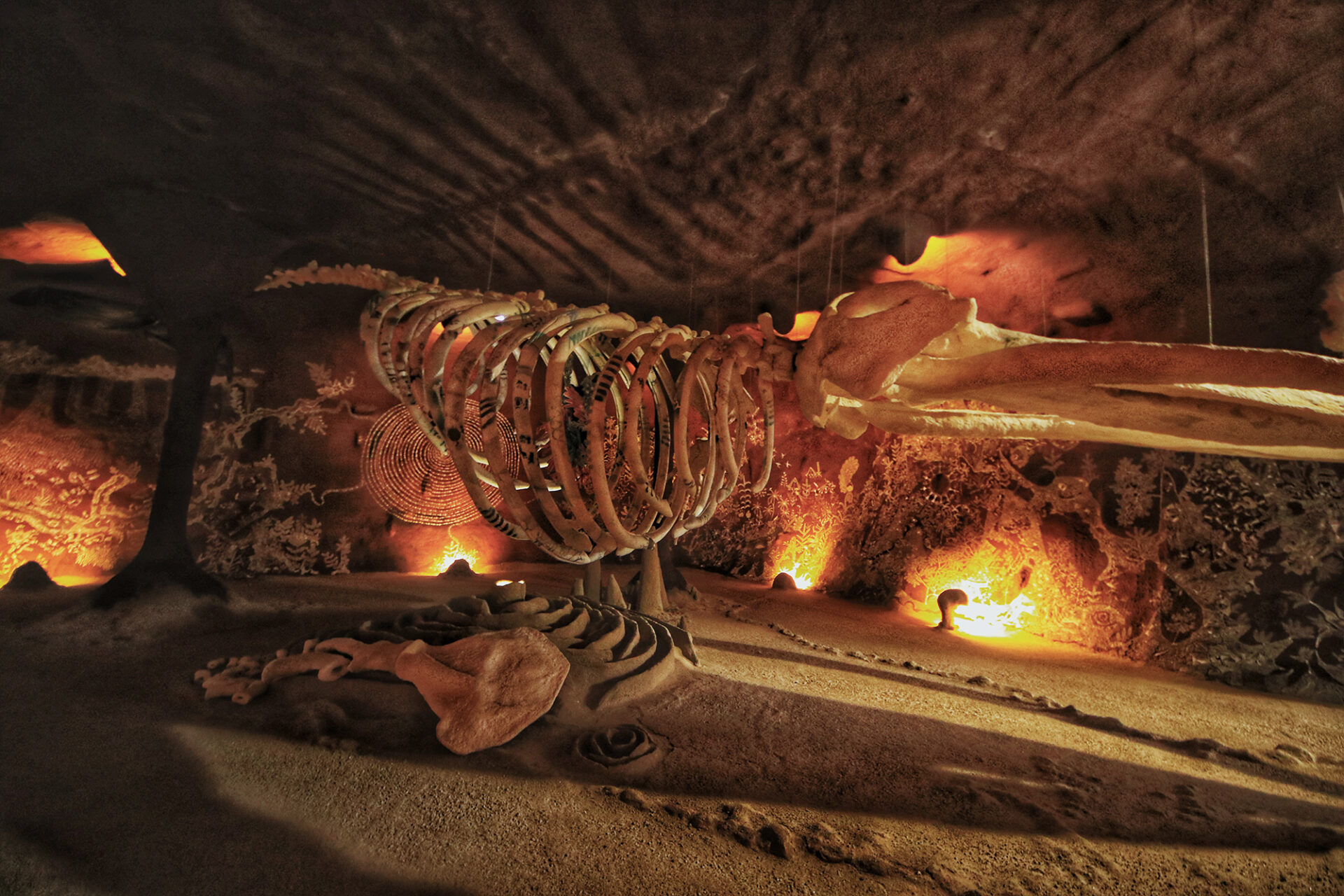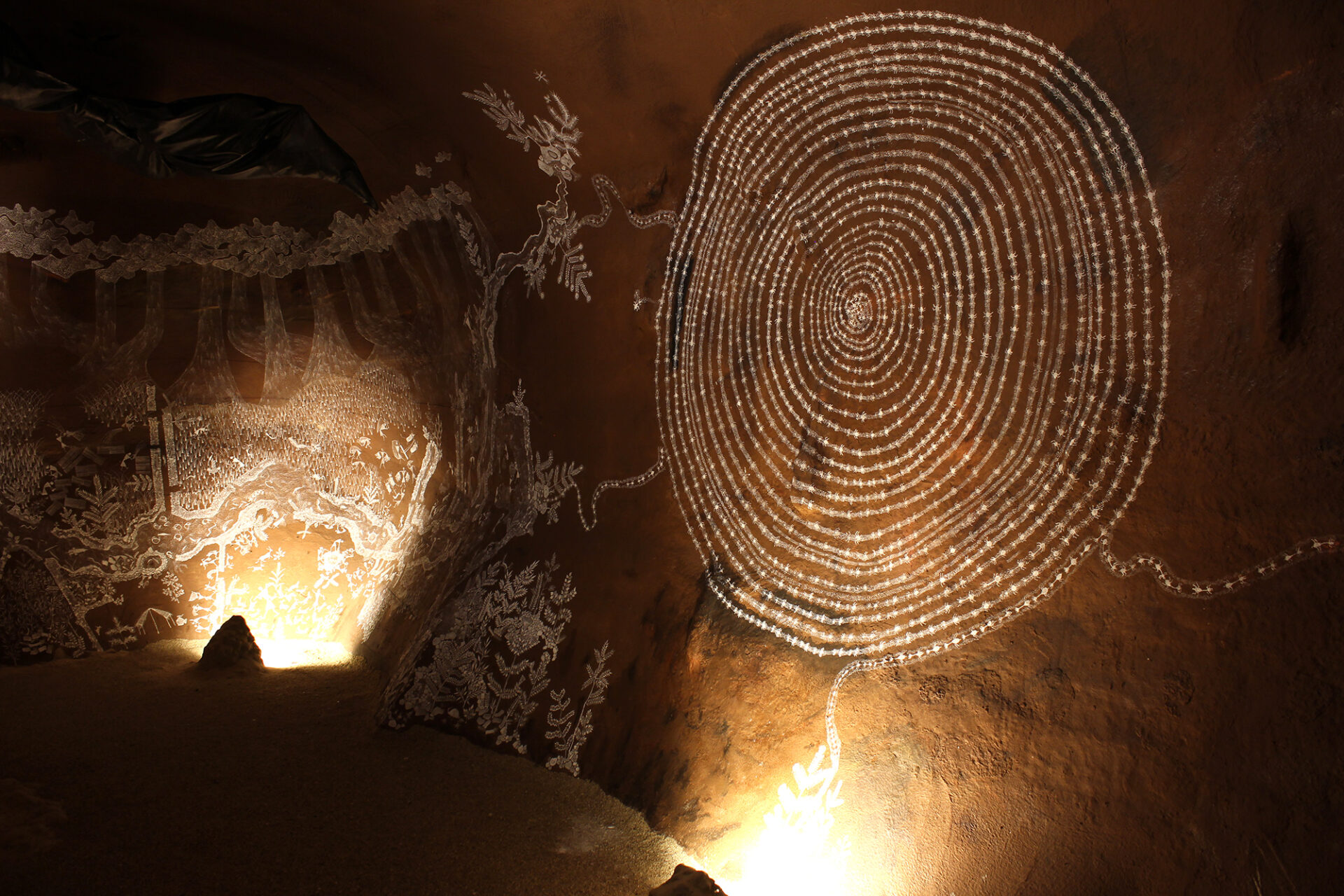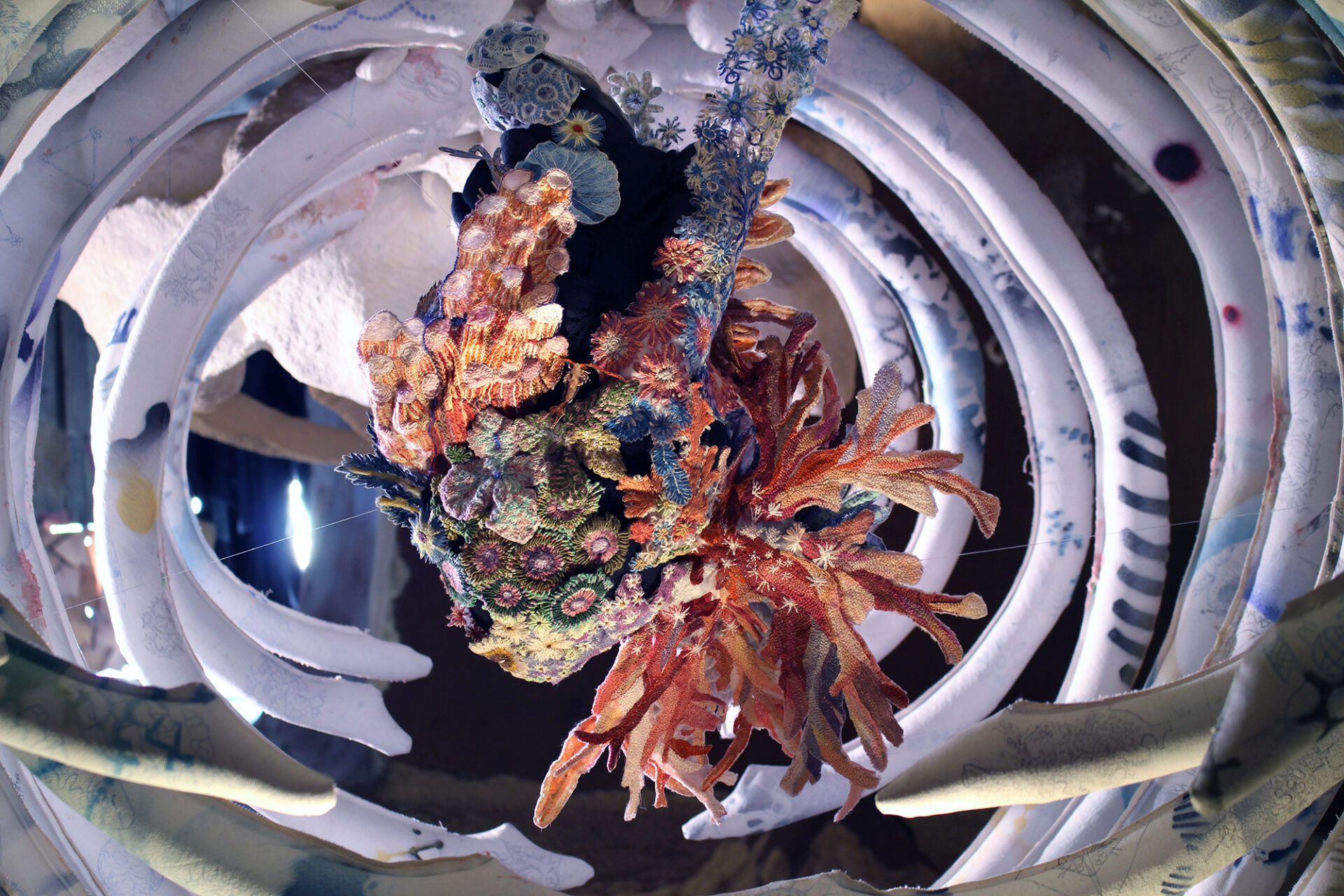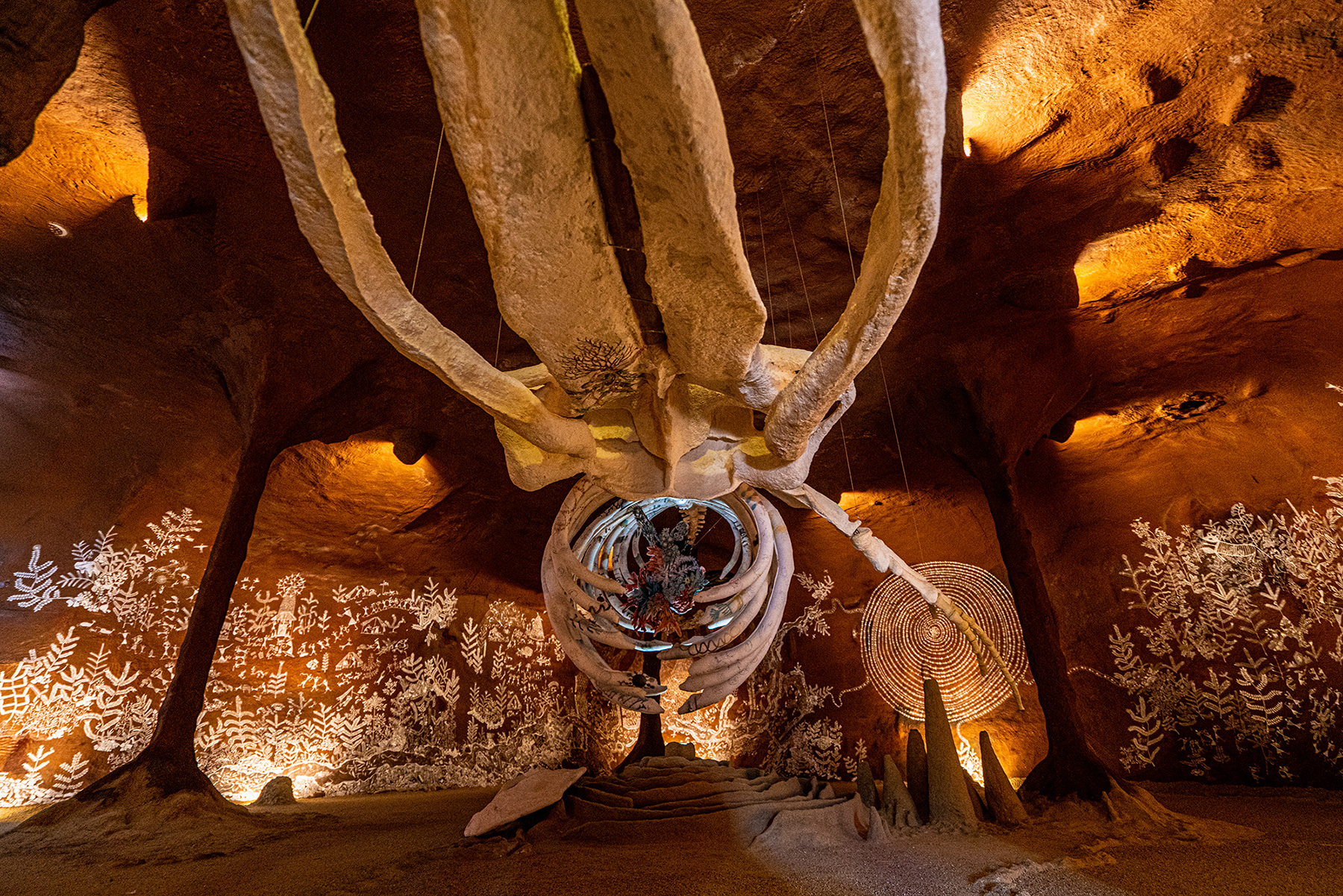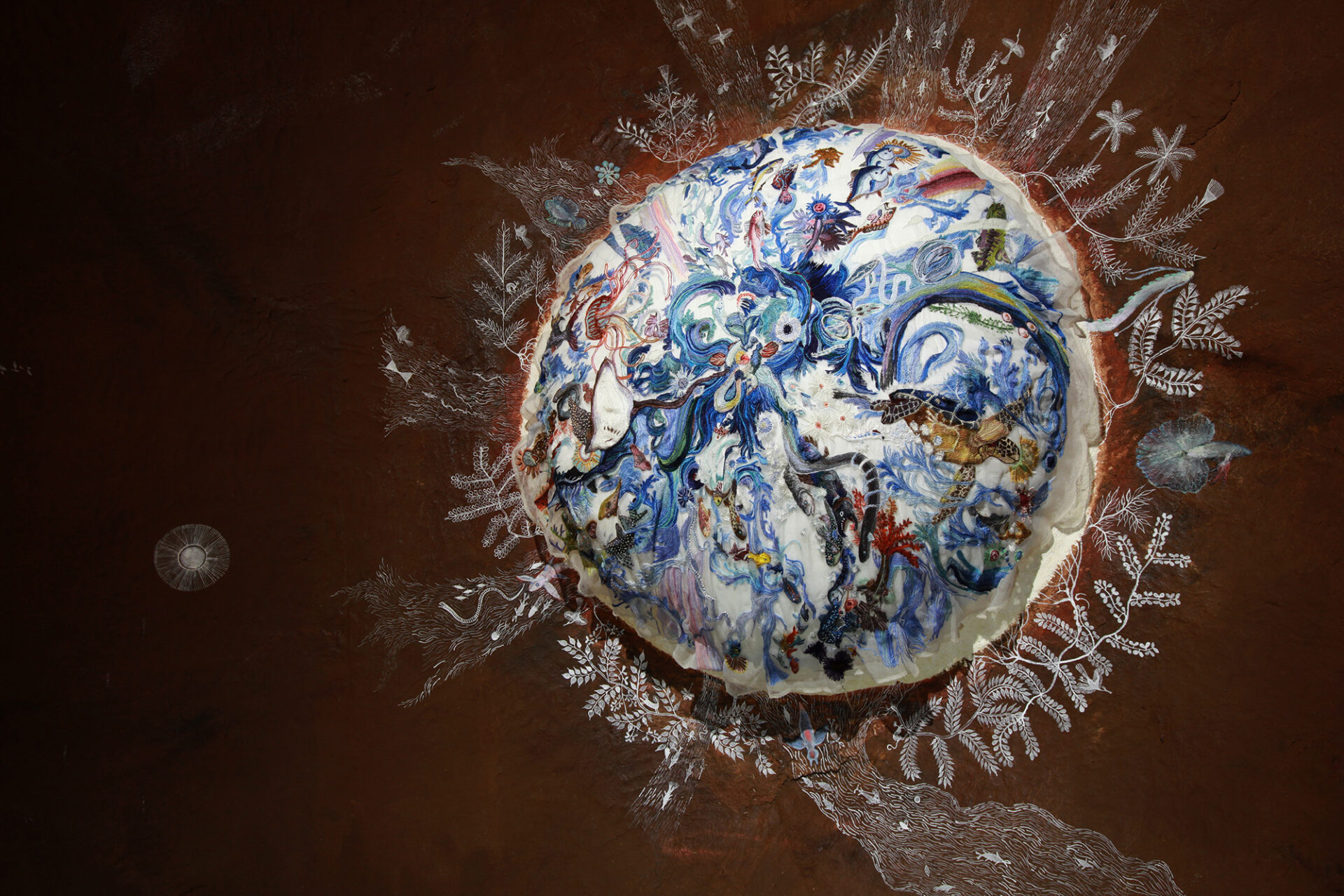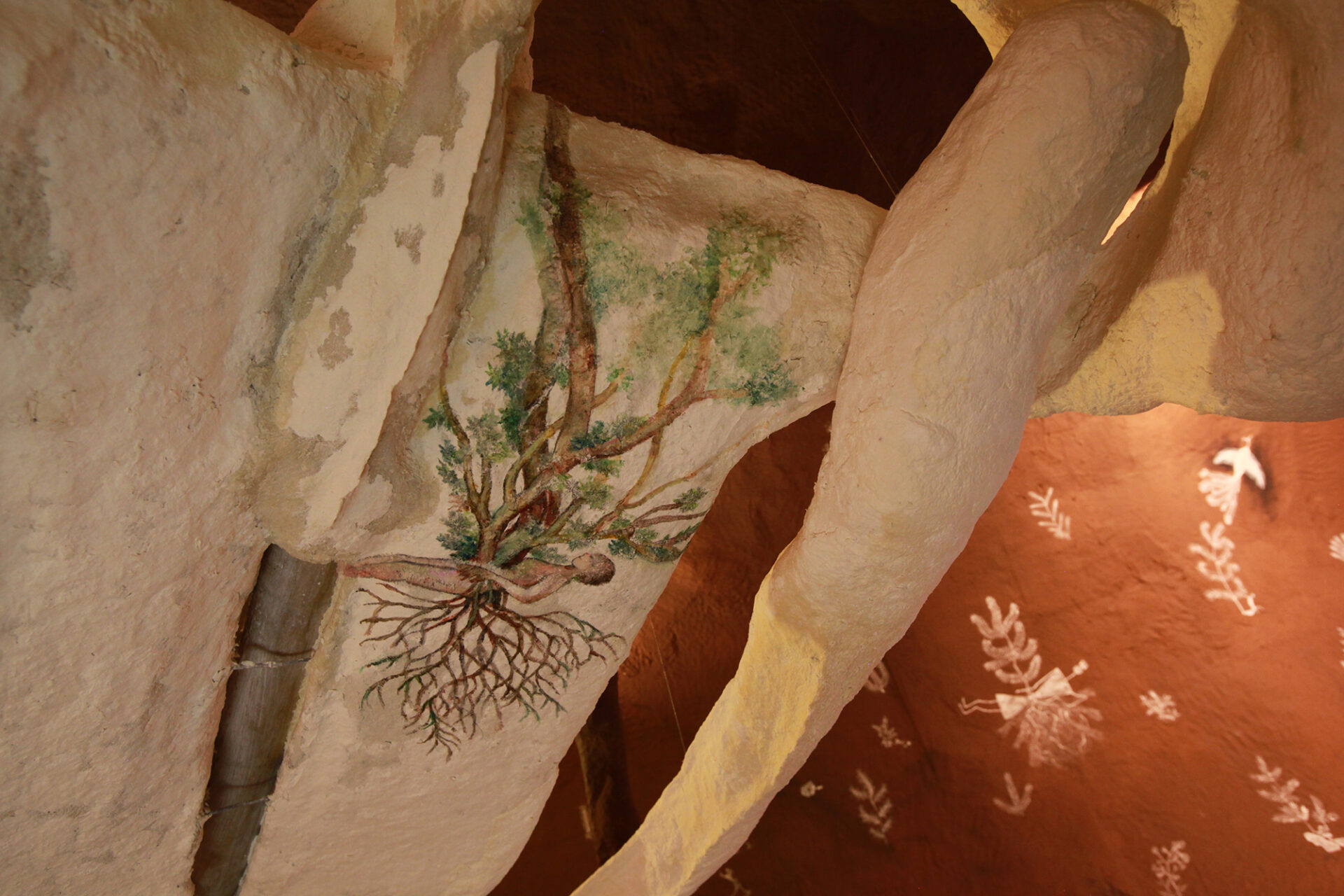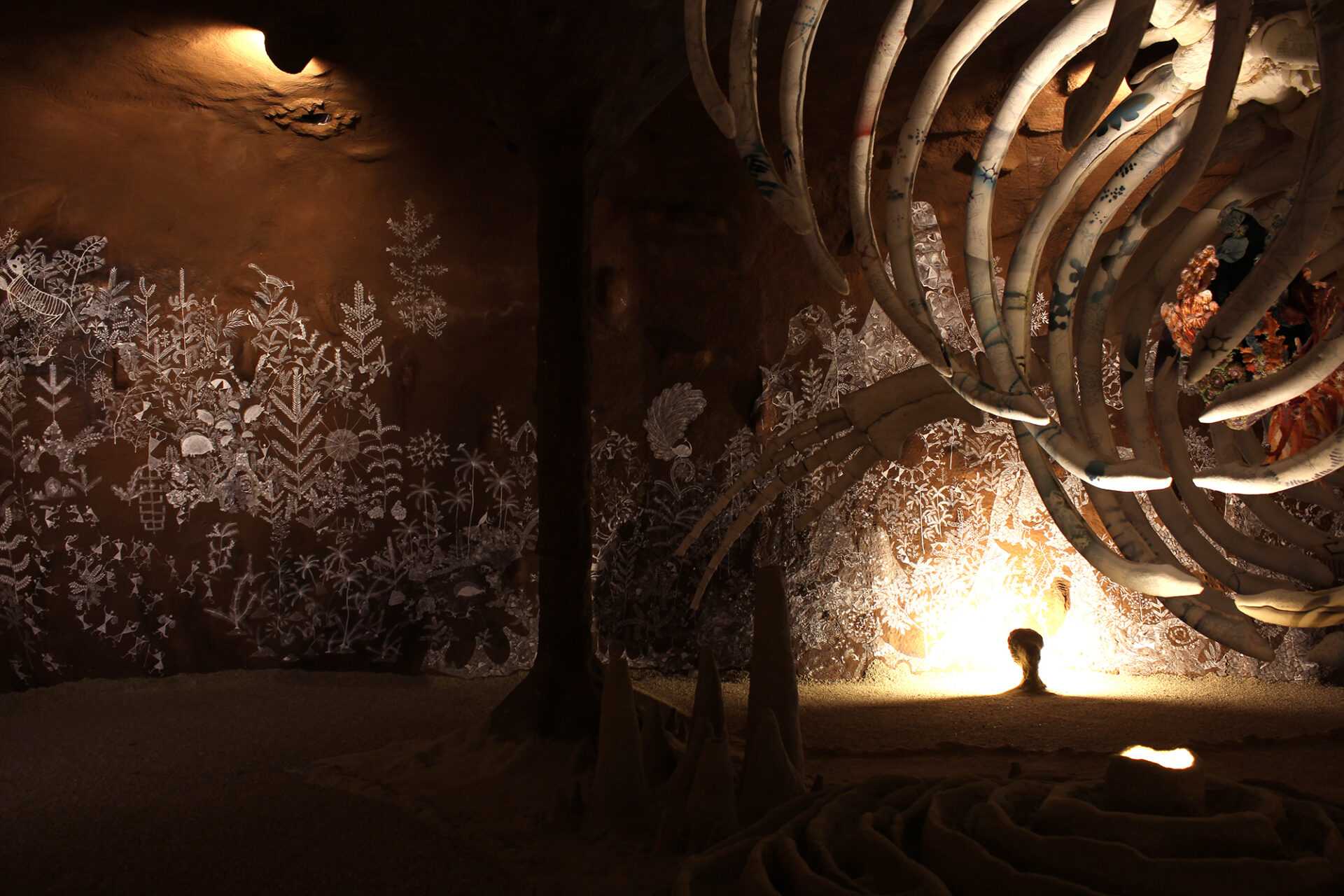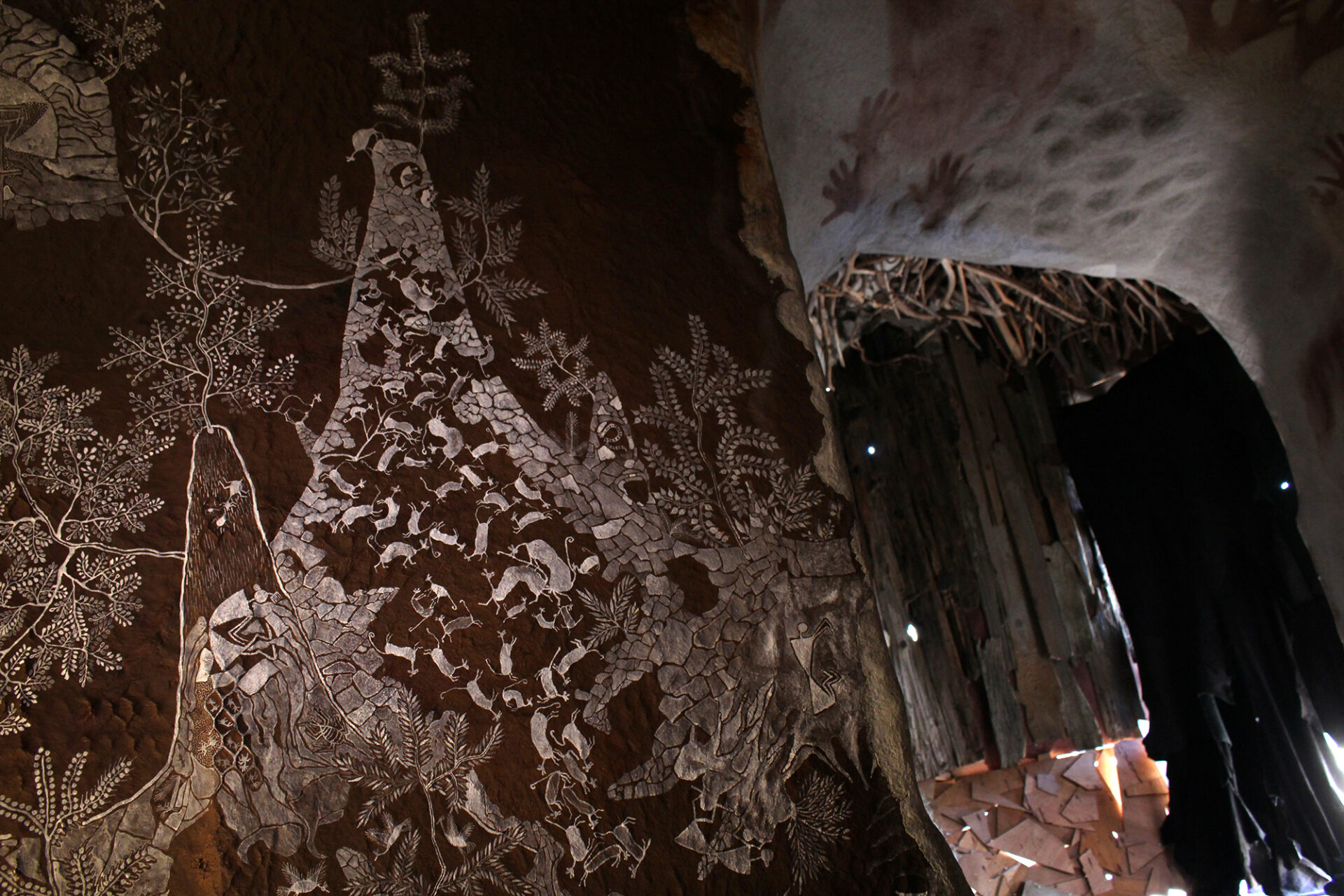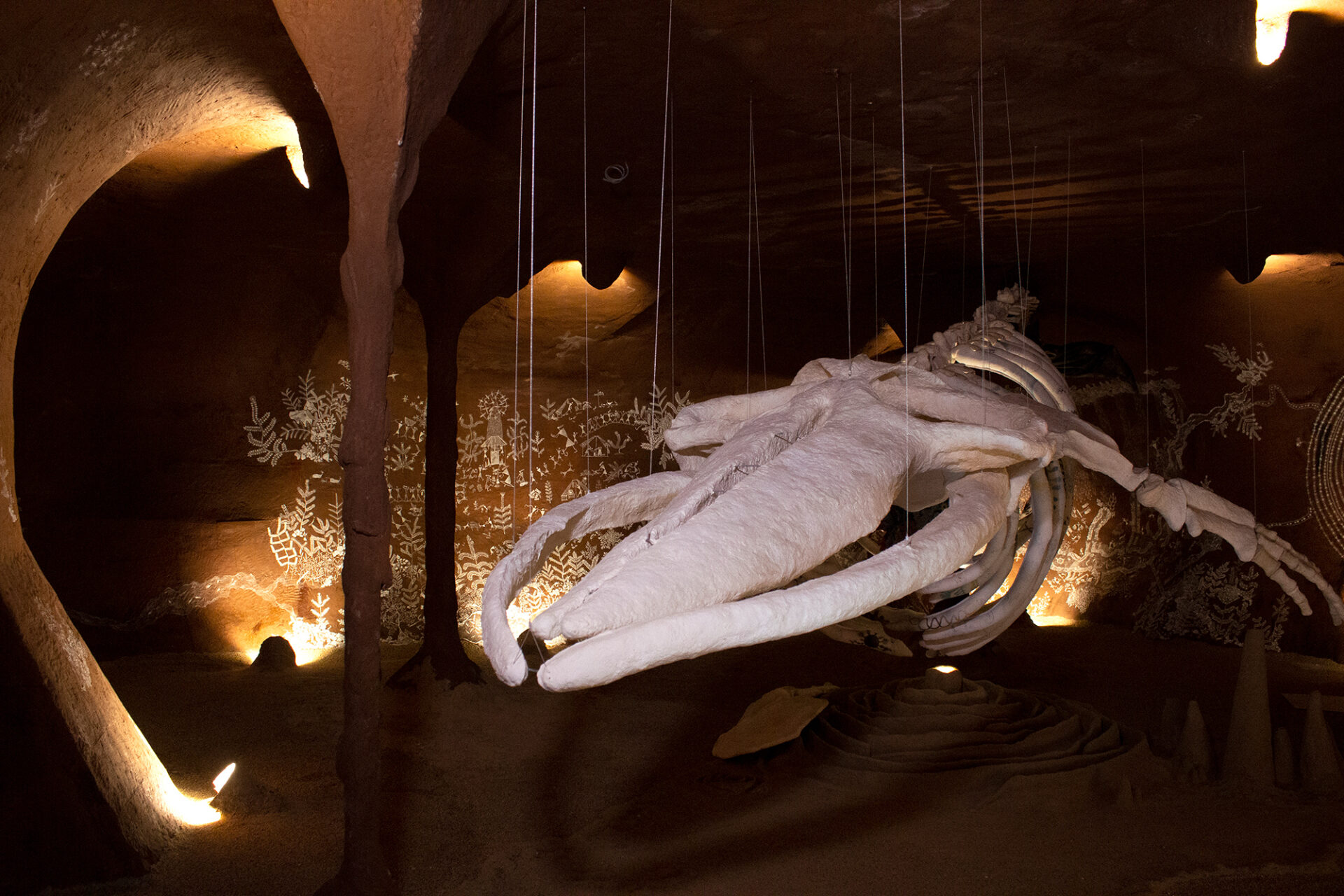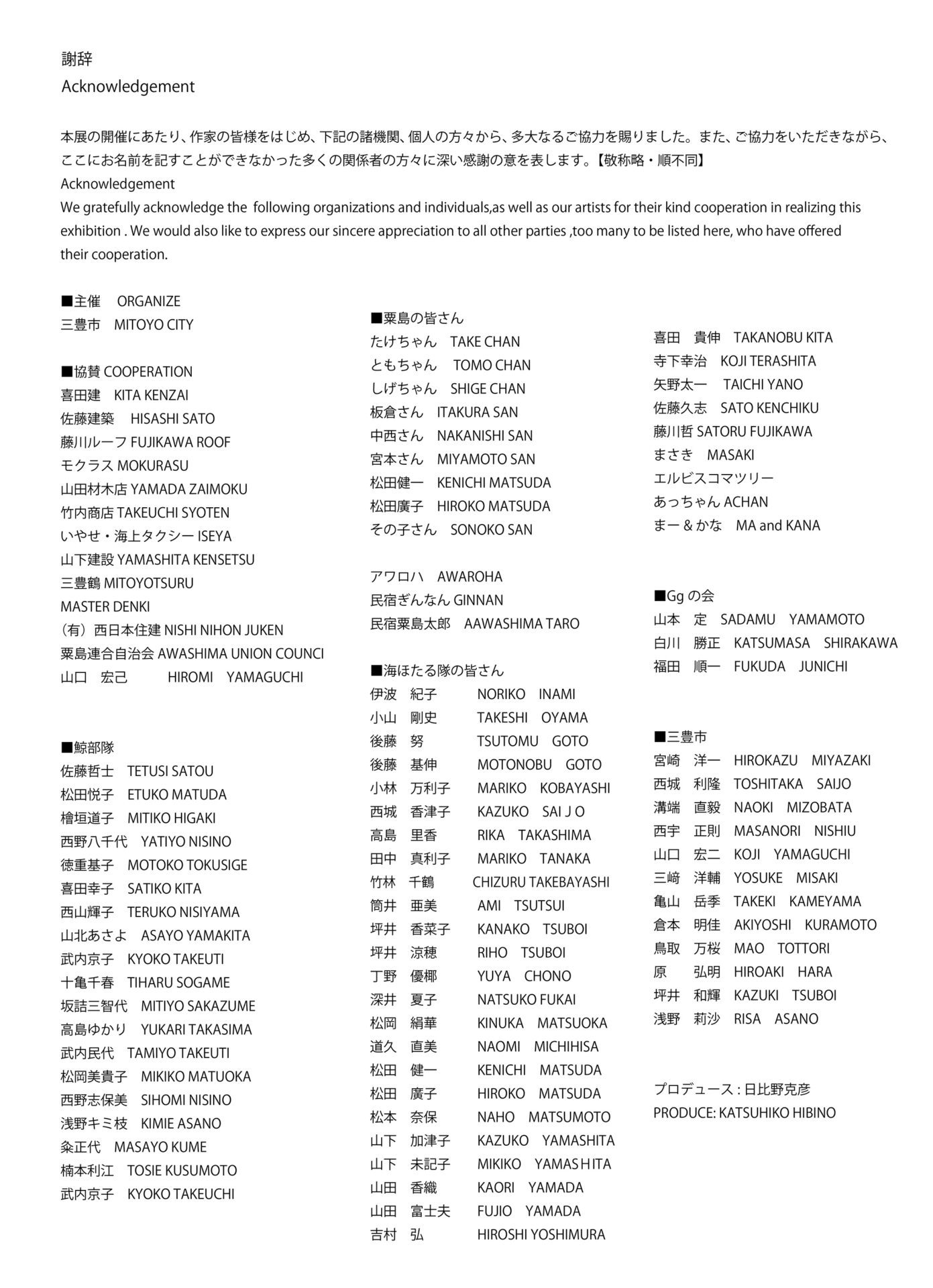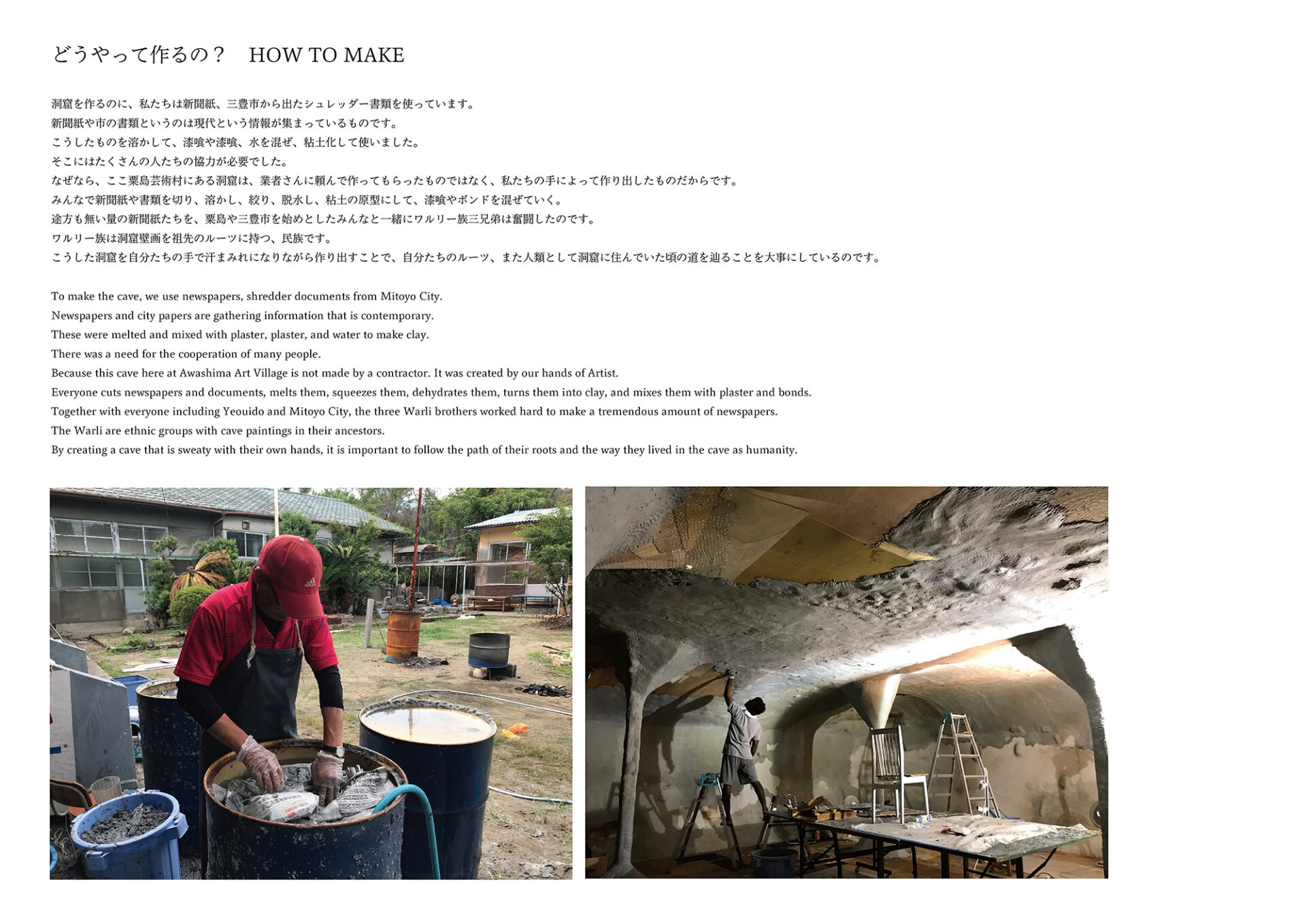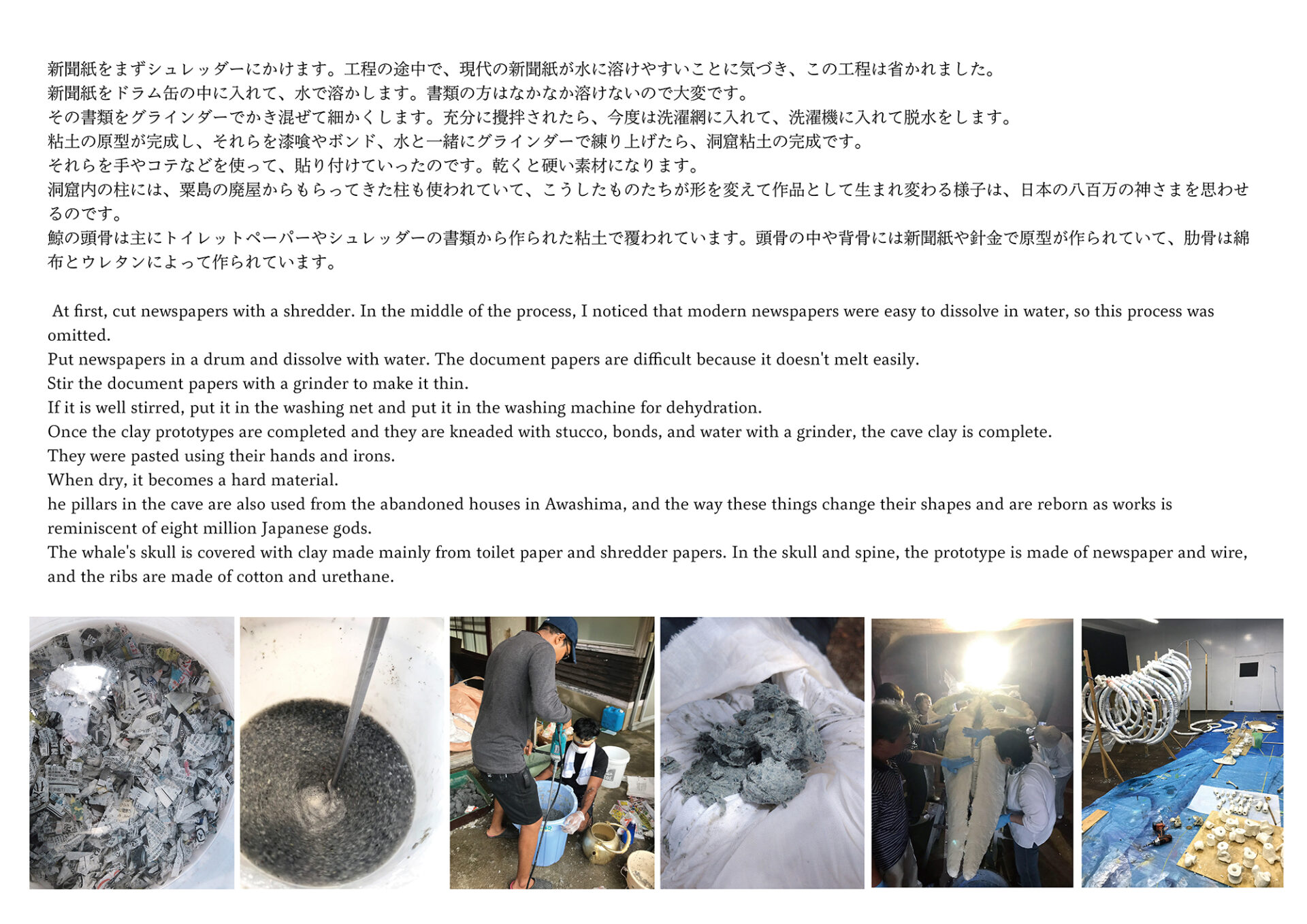Cave mural as narration, and the story of a whale being reborn as oxygen
2019,
2019 Setouchi Triennale in Awashima, Kagawa
Awashima Art Residence
Projected by OHKOJIMA Maki and Warli brothers / Mayur & Tushar & Vikas with Awashima whale team
Slide view
MEDIUM: Newspaper, wood fragments and pillars of an abandoned house in Awashima, shredded document paper from Mitoyo city office, toilet paper, plaster, bond, water, wire, wire mesh, aluminum
DURATION:
foil, tree branches, plywood, acrylic pigment, animal leather, Organdy, thread, embroidery, spray color, pen, copper clasp, cotton cushion, spotlight, urethane, bamboo, sand
Texts
Maki Ohkojima met the body of a white whale floating on the surface of the sea. Its body, with its skin melted and exposed fat, was eaten by many birds and fishes. The sea is where the repeated life melts— “Sea, soup of life”. Even after the body of the whale has finished their life, it becomes a fossil while serving as a source of various marine life, and its skeleton is transformed into an ecosystem home.
“If you die, you will become soil, and life will be born again.” It's a part of the story of the Warli Tribe in India, and it can be said this is the logic of this world. The whale appears in the cave as a messenger and narrates about the life that the creature has made repeatedly. The sea, earth, mountains, sky, and chain of diversity create this earth.
The Cave Mural narrates about the Journey of Mankind.
The Warli have inherited the mural painting culture from thousands of years ago. Warli Tribal People have their language but they don’t have any script, but Warli murals and paintings are their alphabets to transmit the stories, experience, myths and it expresses all the emotions and everyday life in a painted script. The beginning of the origin of the Warli painting has been found in the cave mural in the center of the India place called Bhimbetka. People once lived in caves, used caves as shelter and ceremonial venues. It was also one of the beginning places where the storytelling culture began to be told.This cave was created mainly by Mayur Vayeda and his two Warli brothers who came from India to Awashima in Japan. And worked together with many people. We used newspapers, shredder papers of Mitoyo City offices and schools, plaster, glue, and water on the timber including the abandoned houses in Awashima. All those Documents and current pieces of information around the world now melt as materials, go back in time, and return to cave primitives. The three Warli brothers follow their roots while making caves and are looking at the present through the eyes of nature. The whale a messenger synchronizing with the cave narrates towards everyone in this place.
Warli
The Warli is an indigenous tribe of Warli people living in the mountainous and coastal region of Dahanu & Palghar district of Maharashtra, India. On northern outskirts of Mumbai and extends up to Gujrat border. Warli's spread out especially in the village's named Dahanu, Ganjad, Talasari, Mokhada, Vada, Palghar and several other parts of Maharashtra district as well.
Origin of Warli culture is believed to be originated from 2500 to 3000 BCE. They have their own optimistic beliefs, customs, traditions, and life also they have adopted many Hindu beliefs. Warli customs and traditions are weaved around Mother-Nature. Thus various gods are worshiped with farming as the major activity. Warli shows immense respect towards Mother-Nature, wildlife, and all naturals resources.
Acknowledgement
Process
Video archive
Eyes of Whales
Directed, Filmed and Edited | Shin Ashikaga
Music | Curtis Tamm
Other Works
←Archives© 2026 Maki Ohkojima
